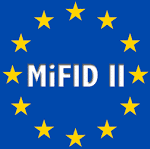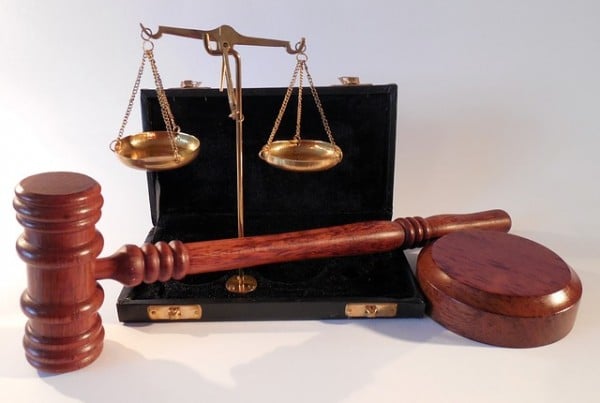In this hyper-communication era, where more than 41 million messages are sent out every minute corporate communication has expanded from emails and SMS to instant messaging (IM), workstream collaboration, and social media messaging. This increasing use of messaging in workplaces has developed a widespread search for message archiving solutions.
An enterprise messaging platform assists businesses in meeting mobile compliance and provides e-discovery for litigation support. Besides, message archiving fulfills various other necessities, including efficiently managing storage and searching content, improving collaboration and productivity, and gaining a wealth of invaluable business insights.
Despite these increasing demands, many companies still fail to make their text message archival process as effective as it should be, making them expensive and prone to errors. These mistakes can lead to incomplete archival of text messages with untoward legal repercussions. Therefore, it is important to follow the industry best practices and ensure the companies’ text message archiver serves its purpose effectively.
Here are the top industry practices for effective message archiving.
1. Triple-check the applicable regulatory compliance and record retention requirements
Depending on which industry the business operates, several industry-specific regulations state what records must be captured and archived and how long they should be retained. No matter how robust the messaging solution is, the company is at risk of fines if it fails to support even one mandatory compliance requirement.
Accordingly, it is crucial to clearly understand, triple-check, and document federal laws, industry-specific regulations, and data retention requirements applicable to the business before investing in one. Get advice from legal experts to identify the rules applicable to the business. This exercise enables the company to invest in the most appropriate solution and eliminate the costs of switching solutions in the middle.
2. Maintain a full inventory of all messaging data sources
The widespread adoption of modern messaging platforms and computing systems in today’s business environments has created various messaging data sources. Maintain a full inventory of all the messaging platforms you are leveraging in your business’s daily workflow, classifying them according to the type of messages they store. Such platforms include but are not limited to the following:
- File servers
- Email systems
- Desktop computers and laptops
- BYOD Devices such as smartphones and tablets.
- Storage includes backup tapes, archives, cloud file repositories, and USB sticks.
While this is not easy, knowing the data sources helps businesses determine what data they are responsible for archiving.
Whether you are enabling BYOD policy or providing company-issued devices, thorough scrutiny of your employee’s mobile devices and equipment should be considered to access all work-related data such as presentations, text messages, documents, spreadsheets, notes, photos, instant messages, emails, call logs, etc. Knowing where this data is accessed and stored makes it easier to trace and retrieve them when needed.
3. Define a message archiving policy
One of the most important elements of message archiving is having a clearly defined and documented message archiving policy at your workplace. A message archiving policy generally defines how long the data remains in the archival but can include the following information in detail.
- How do the organization capture and archive the messages?
- Whether data will ultimately be archived or permanently deleted
- How will the organization use the captured data?
- Who has the authority to access the archived data?
- Consequences of violating the message archiving policy
A well-defined but simple and easy-to-understand archiving policy helps educate organizational employees and their clients on the importance of archiving and empowers them to embrace ethical business messaging habits. Review the policy annually and inform the employees of any policy changes.
4. Define the number of IM apps used for message archiving
Around three billion people use instant messaging apps on mobile, where WhatsApp is the most popular IM app, with 2 billion monthly active users by 2022. Nonetheless, only some instant messaging solutions are secure and suitable for business communication. The organization must clearly define what instant messaging apps employees can use or how many IM apps the company must use for archiving.
The best practice is to use a single IM app for business communication if the company has clients within a limited number of countries or geographic regions. Using a single app across the organization helps to achieve messaging consistency, simplify messaging compliance, and there will be fewer distractions. Also, a single IM app makes it easy to address security and privacy issues.
On the other hand, if the company has clients across different geographic regions, allow the use of IM apps in the workplace. Identify what IM apps are popular among employees and clients. The multiple IM apps allow them to reach a wider audience and create more business opportunities. If the business uses multiple IM apps, ensure to archive messages from them using a separate archiver for each app, such as a WhatsApp archiver, WeChat archiver, etc.
5. Embrace proactive compliance
Advancements in digital communication and unexpected circumstances impacting business operations create gaps in regulatory laws. Resultantly, authorities make mandatory revisions and adjustments to maintain their applicability and validity. Therefore, message archiving regulations are subject to changes, and new laws can replace old ones. The widespread adoption of remote work in the past few years is one example that made many regulatory authorities introduce remote and hybrid text messaging compliance laws.
Hence, as a best practice, archive and legal teams must monitor regulatory updates daily. Follow all regulatory agencies to get updates on potential new laws. Then review or evaluate the validity of the current compliance posture against the updates. If required, immediately introduce necessary changes to remain compliant. This proactive compliance eliminates future compliance risks and makes the message archiving more adaptable to regulatory changes.
6. Establish proper security and disaster recovery mechanisms.
Having adequate security mechanisms is crucial to protect captured messaging data in transit and while they are retained in the archives. Ensure the messaging solution you invest in has military-grade end-to-end encryption. Define who can read and administer the archived data. Regularly review established access control policies to prevent unauthorized access and alterations to the data. According to the company data security policies, it is mandatory to regularly review these protective mechanisms to find any glitches and apply security patches.
Also, best practice is to take regular backups of the archived data. Regular backups ensure you can recover the data in case of a disaster and provide uninterrupted access to the data to support eDiscovery requirements.
7. Invest in scalable message archiving solutions.
As you expand your business, the number of messages to archive per year is rising. Also, there can be sudden fluctuations in the number of messages to archive depending on sudden events. If you are using on-premises storage, it will be difficult to fulfill increasing storage demands on time. Therefore, always invest in cloud-based message archivers to ensure vertical and horizontal storage scalability. Based on prior experiences, you can define the upper and lower limits for the storage you need. This ensures organizations do not spend unnecessarily on storage capacity
8. Deploy Technology That Will Allow You to Capture Messages in Real-Time
At a minimum, a mobile archiving solution will allow you to capture and copy all work-related content on mobile devices to IT-managed systems in real-time or near real-time. But it is much better if you choose an archiving solution that will enable archiving directly from mobile devices. The best practice to make your corporate message archiving more effective is to choose a mobile text message archiving platform that stores all content to a single server regardless of which platform they come from.
About TeleMessage
TeleMessage captures and retains mobile content, including mobile SMS messages, voice calls, WhatsApp, and WeChat conversations from corporate or BYOD mobile phones to ensure compliance with various data protection regulations. The messages are securely and reliably retained within TeleMessage servers or forwarded to your choice of archiving data storage vendor.
Our mobile archiving products securely record content from mobile carriers and mobile devices for various ownership models (BYOD, CYOD, and employer-issued). With our multiple archiving solutions, you can always find the right tools or blend for your requirements:
- Network Archiver
- Enterprise Number Archiver
- Android Archiver
- WhatsApp Archiver
- WeChat Archiver
- Signal Archiver
- Telegram Archiver
TeleMessage offers cross-carrier and international mobile text & call archiving for corporate and BYOD phones. Visit our website at www.telemessage.com to learn more about our mobile archiving products.




